Divers Find 2,000 Priceless Gold Coins
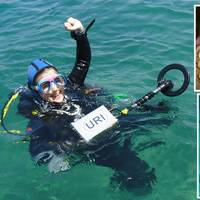
Scuba divers have found the largest cache of gold coins ever discovered in Israel working on wreck site in the ancient harbor of Caesarea on the country's Mediterranean coast, reports the Israeli Antiquities Authority (IAA). The treasure trove of 2,000 coins weighs more than 20 pounds and dates back more than 1,000 years to the era of Fatimid Caliphate, which ruled much of the Middle East and North Africa from 909 to 1171. “It is probably the shipwreck of an official treasury boat which was on its way to the central government in Egypt with collected taxes…
Jack W. Fisher Passes Away at 73

Jack W Fisher, president of JW Fishers Mfg. passed away at home after a brief illness on February 20, 2015. He was 73 years old. The JW Fishers business was started because Fisher, an avid diver, needed an underwater metal detector to use on a salvage project in the mid 1960s. He discovered there was no such device available. Over the next several years he designed and constructed his own underwater metal detector. JW Fishers Mfg. was formed and Jack began building and selling his detectors to other divers.
300th Anniversary of Historic Fleet Sinking

2015 will mark the 300th anniversary of the sinking of a dozen Spanish ships known as the 1715 Plate Fleet; plata being the Spanish world for silver. On the 30th of July 1715 twelve galleons, overloaded with Mexican gold and silver, left Cuba and sailed north carried by the Gulf Stream. Just off the coast of Florida between present day Sebastian and Fort Pierce they were struck by a ferocious hurricane. Some of the ships sank in deep water, some broke up in shallower water, and others ran aground near shore.
Cable Trackers Help Diving Companies and Military

Trying to locate subsea power and communications cables has always been a difficult job. Regulations require cables be buried from several feet to several meters under the ocean bottom to prevent snagging by boat anchors and fishing trawls. The amount of overburden on a cable often means it’s too deep to be located with conventional metal detection equipment. The device that has proved most effective in finding them is a cable tracker. This system has two parts, a signal injector and a probe. The injector is attached to the shore end of a line and induces a signal into one of the conductors.
Historic Great Lakes Shipwreck Possibly Discovered
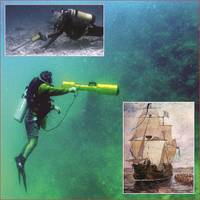
Steven Libert, president of the Great Lakes Exploration Group, announced he has located what is believed to be the remains of Le Griffon, the first European ship to have sailed the upper Great Lakes. The 45-ton barque carrying seven cannons was built by the legendary French explorer Rene-Robert Cavalier, Sieur de La Salle who was attempting to establish a Northwest Passage through Canada. La Salle wanted to provide a faster way to connect France with its trading partners in the Far East and Le Griffon was to be a vital link in the route between Niagra and Illinois.
JW Fishers' Side Scan Sonars Key in Somali Port Mine Clearance
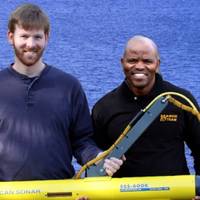
JW Fishers inform that Bancroft Global Development is using its side scan sonars to locate and make safe Somalia's harbor in the capital city, Mogadishu, which was heavily mined during the civil war in that country. Somalia's Transitional Federal Government (TFG) launched the Mogadishu Port Rehabilitation Project and assisting in this work is Washington-based Bancroft Global Development, an organization that receives some funding from the United Nations and the US State Department.
Police and Dive Teams Rely on Underwater Search Equipment
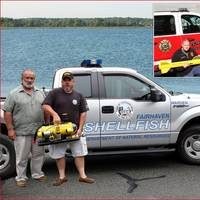
Many government agencies and public safety dive teams are adding underwater search equipment to help make their operations easier, safer, and faster. Maricopa Sheriffs Department in Arizona, Downe Township Fire Rescue in New Jersey, the Fairhaven Massachusetts Harbor Master and the South Carolina Law Enforcement Division are a few of the diverse group of agencies using metal detectors, video cameras and sonars in their underwater search operations. Deputy Jeff Hanson, leader of the Maricopa County Sheriffs Department dive team…
New Technology for Subsea Pipe and Cable Tracking

Utility companies have been laying pipes and cables across the ocean floor for more than a century. Prior to the introduction of GPS, marking their location was difficult, and position information was often erroneous. It is extremely important to know where existing lines lie before undertaking dredging operations or when new pipes and cables are laid down. Regulations require they be buried from several feet to several meters under the bottom to prevent snagging by anchors and…
Marine Industry Employs Boat Towed Detectors
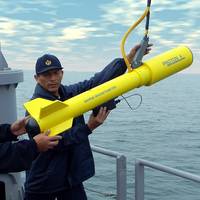
Many marine service companies are acquiring boat-towed metal detectors and magnetometers to assist in salvage operations and geophysical surveys. These devices can locate a variety of targets including sunken vessels, ship anchors and propellers, pipelines, cables and metal debris which must be removed from an area before dredging. The two primary pieces of equipment used in these operations are a magnetometer and the pulse induction (PI) metal detector. Magnetometers are super sensitive instruments that can detect iron and steel objects at hundreds of feet away.
Attach a Transponder to Relocate Underwater Assets
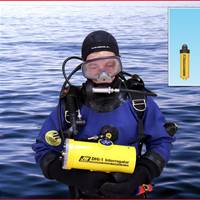
JW Fishers, manufacturers of underwater search equipment, advise that transponders make locating underwater objects easy. Attempting to relocate underwater objects in a low visibility environment can be a difficult and time consuming task. Acoustic transponders solve this problem. Not long ago transponders were expensive pieces of equipment used primarily by the military, oil and gas industries, and oceanographic institutions. Today these underwater locating beacons are being employed by a wide range of users including commercial diving companies…
JW Fishers Win More UMD Contracts
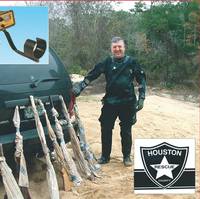
Police departments & sheriffs offices around the country are adding underwater metal detectors (UMD) to their crime-fighting armory. An essential tool for locating evidence disposed of in a waterway, metal detectors routinely assist police divers in finding weapons, shell casings, stolen objects, and explosive devices, inform JW Fishers. One group having great success with the underwater metal detector is Houston County Rescue in Webb, Alabama. Team members are highly trained public safety divers that provide assistance to law enforcement…
New JW Fishers HF Side Scan Sonar
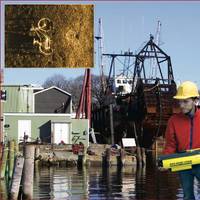
JW Fishers spotlights its new 1200 kHz sonar which provides detailed images of even small and soft underwater targets. This new side scan sonar can show extremely detailed images of even small and soft targets such as old wood wrecks, areas of scattered debris, or even a drowning victim. When the 1200 kHz was towed over a bicycle that had been disposed of in a waterway, not only were the bikes frame and wheels clearly visible, but also the seat and other features. The new sonar is available as a single frequency system or a dual frequency side scan with two sets of transducers in one towfish.
JW Fishers’ ROV’s ‘In Depth’ Solutions
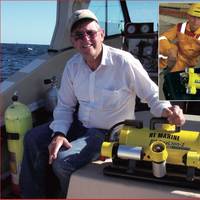
US-based supplier JW Fishers reminds that ROV deployment may prove safer & cheaper than diving. The company quote many examples to back up their statement, including one where the US Army Corps of Engineers (USACE) use a Fishers SeaLion-2 to help in underwater maintenance of Ice Harbor Lock and Dam in Washington State.The dam is more than 2,800 feet long and 100 feet high and provides hydroelectric generation, recreation, and irrigation for the area’s residents and businesses. One of the tools helping the Corps in its inspection and maintenance operations is Fishers SeaLion ROV.
JW Fishers ROV's Provide 'In Depth' Solutions
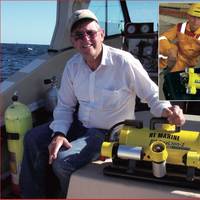
US-based ROV provider, JW Fishers, report its Sea Otter ROV's go deep for government & industry. The company report that many and varied organizations are acquiring ROVs to assist in their underwater operations. These highly maneuverable remote operated vehicles perform a variety of tasks at depths of 1,000 feet or more. Deploying an ROV instead of a diver can reduce the cost and increase the safety of any search or inspection operation. One of the tools helping the US Army Corps of Engineers in its inspection and maintenance operations is Fishers SeaLion ROV.
Side Scan Training for Law Enforcement, Government Agencies
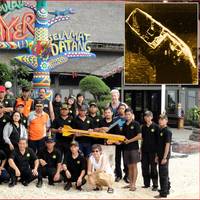
Many public safety dive teams, police and sheriffs departments, and government agencies are acquiring side scan sonar systems to assist in their underwater search and survey operations. Side scan is the ideal tool for these operations because it produces detailed images of the underwater environment regardless of water clarity. In addition, the sonar is able to search large areas quickly, scanning several hundred feet of ocean, lake, or river bottom with each pass of the boat. Side scan can easily locate a variety of targets including sunken boats, submerged vehicles, and drowning victims.
Boat-towed Detectors Assist Researchers and Salvors

A number of archaeological groups and marine service companies are acquiring boat-towed metal detectors to assist in locating shipwrecks and to perform geophysical surveys. These devices can locate a variety of targets including the piles of magnetic ballast stones found on many old wrecks, gold and silver bars, cannons, anchors, pipelines, cables, and various metal debris which must be removed from an area before dredging. The two primary pieces of equipment used in these operations are a magnetometer and pulse induction (PI) metal detectors.
Underwater Metal Detectors Assist in Artifact Recovery
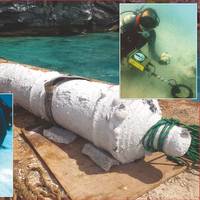
Underwater metal detector is successfully used for the African Slave Wrecks Project. In October 1619 the naval warship Warwick sailed into the King’s Castle Harbour in Bermuda with an important cargo from England; the colony’s new governor, Captain Nathaniel Butler. After taking on provisions the Warwick was to travel onto the struggling colony at Jamestown, Virginia, but it never made the voyage. Before the ship could sail, Bermuda was hit by a fierce hurricane. Battered by strong winds the Warwick broke free from her anchors…
Universities, Environmentalists get Help From Underwater Cameras

More universities and environmental groups are using underwater video systems to assist in their research and monitoring operations. These cameras can be very useful tools in studying benthic habitats and marine organisms, and to monitor the impact of pollution on the environment. Darling Marine Center is the marine laboratory at the University of Maine. Home to world renown research and education, the facility is situated on the shores of the Gulf of Maine with its diverse intertidal habitats.
US ROV's Invade South America
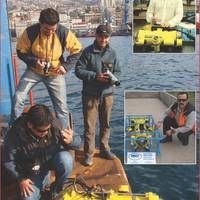
Subsea Engineering in Santiago, Chile is one of many South American enterprises and military establishments adding ROVs in an effort to expand their operational capabilities. The company offers a complete package of design and construction services including the building of pipelines and installation of submarine power and communications cables. Owner Pedro Campos is a certified Naval and Marine Engineer, and a member of the International Association of Diving Contractors. Campos says “performing underwater operations in my country is complex and challenging.
Expanding Underwater Search Capabilities
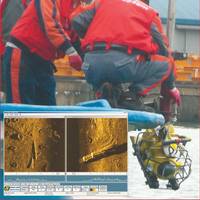
Over the past year a number of Asian companies and government agencies have acquired underwater search equipment to aid in the location of lost objects and assist in performing survey operations. In China, Guangzhou Advanced Maritime Academy has added a remote operated underwater vehicle (ROV) to their program. Reforms and opening to the outside world have paved the way for development of the country’s shipping industry. The throughput of cargo and containers at China’s ports has been the largest in the world for the past five years with an annual growth rate of 35%.
Archaeologists Go Deep to Uncover History
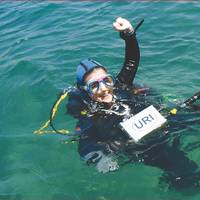
Many universities are adding or expanding their underwater archaeology programs in an effort to give students a broader educational experience and a better understanding of our maritime history. The field of underwater archaeology is expanding rapidly as the equipment required for marine exploration becomes more affordable, and more scientists and researchers learn to scuba dive. Indiana University (IU) Bloomington has one of the oldest academic diving programs in the country.
Diving Companies Track Pipes and Cables
WJ Castle PE & Associates Castle was recently subcontracted by Brayman Construction to perform an inspection and document the underwater conditions at a utility’s proposed site for a diffuser pipe extension. Using JW Fishers CT-1 cable tracker and PT-1 pipe tracker, Castle’s team of divers searched for a high voltage power cable and pipeline running through the area. Complicating the job was the excessive amount of debris littering the site, including steel plates, beams, and wire rope. Also close by were a seawall, constructed of steel-reinforced concrete and steel plates. Very high concentrations of ferrous metal in the area prevented the use a standard magnetometer, as it would be impossible to locate individual pieces.
More Public Safety Dive Teams Employ Side Scan Sonar
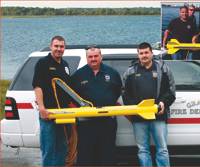
More public safety dive teams are adding sonar to assist in their underwater search and recovery operations. Side scan is the ideal tool for these operations because it produces detailed images of the underwater environment regardless of water clarity. In addition, the sonar is able to search large areas quickly, scanning several hundred feet of ocean, lake, or river bottom with each pass of the boat. The sonar does this by transmitting an acoustic beam from a towfish which sweeps the bottom and reflects off any objects lying there.





